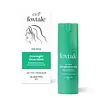What's inside
What's inside
 Key Ingredients
Key Ingredients

 Benefits
Benefits

 Concerns
Concerns

 Ingredients Side-by-side
Ingredients Side-by-side

Water
Skin ConditioningC12-15 Alkyl Benzoate
AntimicrobialPropylene Glycol
HumectantMethylene Bis-Benzotriazolyl Tetramethylbutylphenol
UV FilterDecyl Glucoside
CleansingXanthan Gum
EmulsifyingDiethylamino Hydroxybenzoyl Hexyl Benzoate
UV FilterCetearyl Olivate
Sorbitan Olivate
EmulsifyingEthylhexyl Triazone
UV AbsorberDimethicone
EmollientNiacinamide
SmoothingGlyceryl Stearate
EmollientPhenoxyethanol
PreservativeEthylhexylglycerin
Skin ConditioningOctenidine Hcl
Antimicrobial3-O-Ethyl Ascorbic Acid
Skin ConditioningAcrylates/C10-30 Alkyl Acrylate Crosspolymer
Emulsion StabilisingTocopherol
AntioxidantAminomethyl Propanol
BufferingDisodium EDTA
Simethicone
EmollientWater, C12-15 Alkyl Benzoate, Propylene Glycol, Methylene Bis-Benzotriazolyl Tetramethylbutylphenol, Decyl Glucoside, Xanthan Gum, Diethylamino Hydroxybenzoyl Hexyl Benzoate, Cetearyl Olivate, Sorbitan Olivate, Ethylhexyl Triazone, Dimethicone, Niacinamide, Glyceryl Stearate, Phenoxyethanol, Ethylhexylglycerin, Octenidine Hcl, 3-O-Ethyl Ascorbic Acid, Acrylates/C10-30 Alkyl Acrylate Crosspolymer, Tocopherol, Aminomethyl Propanol, Disodium EDTA, Simethicone
Water
Skin ConditioningPropylene Glycol
HumectantHydroxyethyl Acrylate/Sodium Acryloyldimethyl Taurate Copolymer
Emulsion StabilisingGlycolic Acid
BufferingGlycerin
HumectantLactic Acid
BufferingGluconolactone
Skin ConditioningOctyldodecanol
EmollientOctyldodecyl Xyloside
EmulsifyingPEG-30 Dipolyhydroxystearate
EmulsifyingMandelic Acid
AntimicrobialPolyacrylate-13
Polyisobutene
Polysorbate 20
EmulsifyingTocopherol
AntioxidantPanthenol
Skin ConditioningPhenoxyethanol
PreservativeSodium Phytate
Ethylhexylglycerin
Skin ConditioningSodium Hydroxide
BufferingParfum
MaskingWater, Propylene Glycol, Hydroxyethyl Acrylate/Sodium Acryloyldimethyl Taurate Copolymer, Glycolic Acid, Glycerin, Lactic Acid, Gluconolactone, Octyldodecanol, Octyldodecyl Xyloside, PEG-30 Dipolyhydroxystearate, Mandelic Acid, Polyacrylate-13, Polyisobutene, Polysorbate 20, Tocopherol, Panthenol, Phenoxyethanol, Sodium Phytate, Ethylhexylglycerin, Sodium Hydroxide, Parfum
Ingredients Explained
These ingredients are found in both products.
Ingredients higher up in an ingredient list are typically present in a larger amount.
Ethylhexylglycerin (we can't pronounce this either) is commonly used as a preservative and skin softener. It is derived from glyceryl.
You might see Ethylhexylglycerin often paired with other preservatives such as phenoxyethanol. Ethylhexylglycerin has been found to increase the effectiveness of these other preservatives.
Phenoxyethanol is a preservative that has germicide, antimicrobial, and aromatic properties. Studies show that phenoxyethanol can prevent microbial growth. By itself, it has a scent that is similar to that of a rose.
It's often used in formulations along with Caprylyl Glycol to preserve the shelf life of products.
Propylene Glycol is an odorless, colorless liquid. As a humectant, it helps skin retain moisture. It also aids in delivering active ingredients.
Another role of this ingredient is preventing a product from melting or freezing. Propylene glycol also adds antimicrobrial properties to a product, elongating product lifespan.
This ingredient is considered an organic alcohol and commonly added into both cosmetics and foods.
Those with sensitive skin or conditions may develop a rash when using this ingredient.
Learn more about Propylene GlycolTocopherol (also known as Vitamin E) is a common antioxidant used to help protect the skin from free-radicals and strengthen the skin barrier. It's also fat soluble - this means our skin is great at absorbing it.
Vitamin E also helps keep your natural skin lipids healthy. Your lipid skin barrier naturally consists of lipids, ceramides, and fatty acids. Vitamin E offers extra protection for your skin’s lipid barrier, keeping your skin healthy and nourished.
Another benefit is a bit of UV protection. Vitamin E helps reduce the damage caused by UVB rays. (It should not replace your sunscreen). Combining it with Vitamin C can decrease sunburned cells and hyperpigmentation after UV exposure.
You might have noticed Vitamin E + C often paired together. This is because it is great at stabilizing Vitamin C. Using the two together helps increase the effectiveness of both ingredients.
There are often claims that Vitamin E can reduce/prevent scarring, but these claims haven't been confirmed by scientific research.
Learn more about TocopherolWater. It's the most common cosmetic ingredient of all. You'll usually see it at the top of ingredient lists, meaning that it makes up the largest part of the product.
So why is it so popular? Water most often acts as a solvent - this means that it helps dissolve other ingredients into the formulation.
You'll also recognize water as that liquid we all need to stay alive. If you see this, drink a glass of water. Stay hydrated!
Learn more about Water